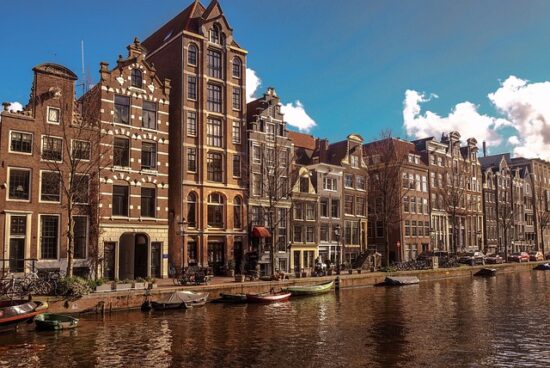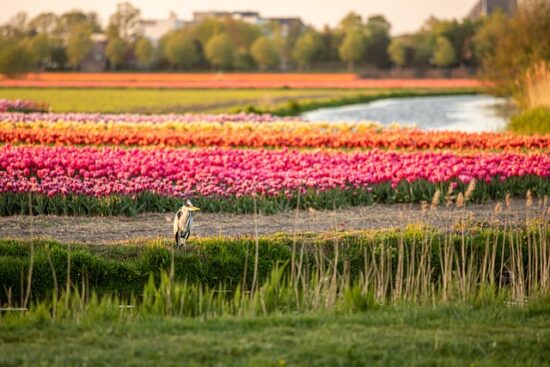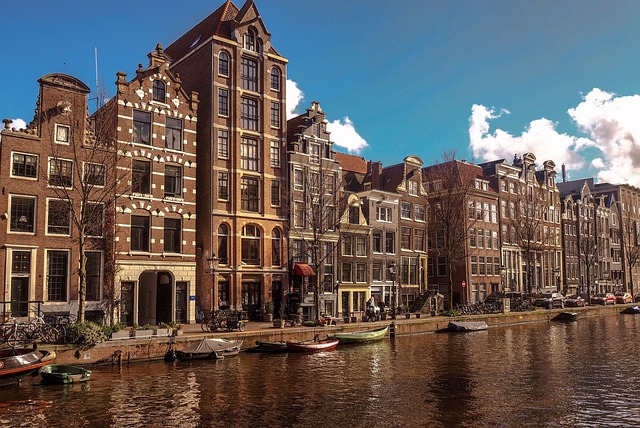The Netherlands is a small yet thickly populated country of Western Europe. In the Caribbean Sea, there are three islands that also form part of this country i.e. islands of Saba, Sint Eustatius and Bonaire. The literal meaning of the word ‘Netherlands’ is ‘lower countries’. It is because of the lowland features of this country. Majority of the regions located below sea level are man-made. It shares borders with Germany and Belgium. The three most important cities of Netherlands are Amsterdam, Rotterdam and The Hague. Amsterdam is the largest city of this country. The Netherlands is one of the top ten exporters of the world. It has one of the world’s densest road networks even more dense than France and Germany. Though the word Holland (which means ‘wood land’) is used for the entire country, but in reality it only refers to the North and South of Holland, its two provinces. Let’s dive down deep into Netherlands Facts for kids to explore more about it!
A Quick Guide to Netherlands Facts for Kids
Meaning: Lower countries
Population: 16.8 million
Capital City: Amsterdam
Official Language: Dutch
Largest Religion: Christianity
Major Industry: Foodstuff
 Fascinating Netherlands Facts for Kids | History
Fascinating Netherlands Facts for Kids | History
- The earliest evidence of human settlement in the Netherlands is found close to Maastricht and it dates back to 250,000 years before.
- Pesse canoe is believed to be the oldest boat in the world. It was excavated in 1955 from Friesland and Drenthe and it refers to the Mesolithic period. It is 298 cm in length and 44 cm in width.
- Mesolithic tribes began settling Friesland and Drenthe areas of this country in about 8000 BC.
- The hunter-gatherers came here in around 5600 BC.
- Farming was started in around 4800 to 4500 BC.
- The Germanic tribes migrated to this country until 250 BC.
- During 10th and 11th centuries, most of the areas of the Netherlands were governed by Holy Roman Empire.
- The original language of the people living in the County of Holland was Frisian.
- During 15th century, the major port of Europe was in Amsterdam for trading grain from Baltic region. Amsterdam became the center for the distribution of grain to Northern France, England and Belgium.
- Under Habsburg rule, all the fiefs consisting parts of the Netherlands were merged to form seventeen provinces. These provinces consisted of some regions of Germany, France, Belgium and Luxembourg.
- During much of 17th century, the Dutch Empire became the major economic power. This period is often referred to as Dutch Golden Age. The empire had 16,000 merchant vessels by the mid century.
 Geography
Geography
- It is a low and flat territory.
- It has a population of 16.8 million.
- Almost 26 percent of the area of this country is situated below sea level.
- Almost 21 percent of the country’s population lives below sea level.
- The maximum height of the foothills in this country is 321 metres only.
- Almost 17 percent of the land area of the Netherlands was reclaimed from the sea water and lagoons.
- The Rhine river divides the country into North and South.
- It has a moderate maritime climate which means summer days are cool and winters are kind.
- In June, there is 17-hour daylight while it reduces to 8 hours during December.
- With an area of 370 sq. km, the Eastern Scheldt is by far the largest national park in the Netherlands. It was established in 2002 and in Dutch, it is known as Oosterschelde.
Interesting Facts about Netherlands
- Informally, the Netherlands is also known as Holland.
- Only about 50 percent of the land of this country is just one metre above sea level.
- From 1962 and 2004, the port of Rotterdam was the largest port of the world. Today it is the largest in Europe.
- It has one of the Europe’s oldest standing armies. The Maurice of Oranger was the first one to build it.
- In 2014, it stood at the first position among 20 countries in Global Enabling Trade Report.
- It is ranked first in the world in terms of child well-being (UNICEF).
- After USA, it is the second largest exporter of food and farming products around the world.
- It ranks third among the world countries that have elected parliament.
- By attracting 4.2 million tourists worldwide, Amsterdam is ranked 5th among the busiest tourist destinations of Europe.
- It is one of the top five investors in USA.
- It is ranked 5th among the most competitive economies of the world (Global Competitiveness Report).
- Due to its high quality lifestyle, it was ranked seventh among the happiest countries of the world (UN World Happiness Report – 2013).
- In 2010, it was ranked 10th among the most democratic countries of the world (The Economist).
- It ranks tenth among the most populous countries of Europe and 63rd in the world.
- In 2013, the Netherlands was ranked 13th in the world in terms of highest per capita income (International Monetary Fund).
- It is ranked 13th in the world among countries that have most free market economies
- According to Index of Economic Freedom 2016, the Netherlands is ranked 17th in the world.
- It is ranked 17th among the largest economies of the world.
- The Amsterdam Stock Exchange (AEX) is the oldest stock exchange in the world.
- As for economy, the fastest growing region of this country is BrabantStad.
- The Netherlands has no resources for mining activities and its last mine was shut down in 1974.
- The Groningen gas field is one of the world’s largest gas fields of natural gas.
- On one occasion, the Netherlands contributed 25 percent to the export of tomatoes in the world.
- Almost one-third of the cucumbers, tomatoes and chilis are traded through the Netherlands.
- About one-fifteenth of the apples exported in the world are supplied by this country.
- Along with Denmark, the Netherlands is the most bike-friendly country of Europe (European Cyclists’ Federation – 2013). There are 18 million bicycles in this country.
- In 2013, the Rotterdam port was the eighth largest container port in the world.
- As for passengers, the Schiphol airport is ranked fifth among the busiest airports in Europe.
- With an average height of 1.81 metres for males and 1.67 metres for females, the Dutch are by far the tallest in the world.


Leave a Reply